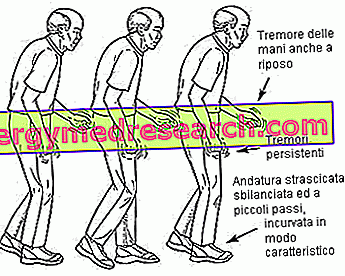Generality
The glottis is the empty space of the larynx between the two vocal cords.

Located inferior to the epiglottis and superiorly to the cricoid cartilage, the glottis has a role both on the occasion of the respiration, both in occasion of the phonation.
During breathing, it represents the passage that allows the inhaled air to reach the trachea and the exhaled air to exit from the trachea; during the phonation, instead, it constitutes the opening through which the air necessary for the vibration of the vocal cords filters, vibration that is fundamental to the emission of sounds from the mouth.
The glottis can be affected by various medical conditions, including: acute laryngitis due to inflammation of the vocal cords, chronic laryngitis resulting from paralysis of the vocal cords, laryngospasm and vocal cord tumor.
Brief anatomical reference to the larynx
The larynx is an unequal internal organ of the human body, comparable to a tubular duct, which resides at the level of the neck.
Subsequent to the pharynx and preceding the trachea, the larynx constitutes the last tract of the upper airways; after it, in fact, the so-called lower airways begin (trachea, bronchial tree, lungs and alveoli).

The larynx is a fruit formation of various cartilaginous components - including epiglottis, thyroid cartilage, cricoid cartilage, arytenoid cartilage, corniculate cartilages and cuneiform cartilages - held together by a series of muscles and ligaments.
Seat of the vocal cords, the larynx covers three fundamental functions:
- It channels the air towards the trachea, then towards the lungs;
- It allows speech, through the vibration of the vocal cords ;
- Thanks to the cartilage valve called epiglottis, it prevents the food being swallowed from entering the trachea and obstructing the airways.
Outside the human body, the larynx can be placed at the same height as the so-called Adam's apple, which is the anterior protrusion of the neck which is notoriously more evident in men than in women.
What is the Glottis?
The glottis is the natural space that can form between the vocal cords and their respective arytenoid cartilages.
As readers will be able to ascertain later, the glottis can also be described as the empty space of the larynx, which the latter forms when it must allow the passage of air into the trachea and the passage in the opposite direction, during normal breathing.
The glottis is not a permanent space. Its presence, in fact, is affected by the activities and movements of which the larynx is the protagonist.
To understand the Glottis ...
To fully understand the definition of glottis it is useful to review what the vocal cords and arytenoid cartilages are.
VOCAL CORDS
The vocal cords are essentially a pair of mucosal-coated tendon flaps, which cross the larynx in the anterior-posterior direction, below the epiglottis.
From the vocal cords depends the phonation, that is the emission of words.
ARITHENOID CARTRIDGES
The arytenoid cartilages are a pair of cartilages of the larynx, in the shape of a pyramid with three sides, which have the function of inserting the vocal cords and allowing / favoring their movement.
Synonyms for glottis
Glottis is also known as a glottis rhyme .
Anatomy
The glottis is localizable:
- Below the laryngeal cartilage called epiglottis ("epiglottis" literally means "above the glottis");
- In the middle of the vocal cords and the respective arytenoid cartilages, laterally;
- Above the cricoid cartilage.
The glottis is a space whose dimensions are not fixed, but vary according to the movements of the vocal cords.
Generally speaking, the glottis is most noticeable during normal breathing, while it is almost imperceptible (if not entirely indistinguishable) during word output (phonation).
During normal breathing, the glottis assumes, thanks also to the position of the vocal cords, the shape of an isosceles triangle with the apex turned forward (towards the front of the human body) and the base facing backwards (towards the back of the human body).
During the phonation, instead, it becomes a thin or very thin line, interposed between the two vocal cords.
Glottis and Swallowing of Food
Swallowing is the physiological act that serves to channel the food introduced into the oral cavity into the digestive tract.

During swallowing, it is essential that the glottis is inaccessible, because otherwise food could wedge into the airways and dangerously obstruct breathing.
To deal with the inaccessibility of the glottis, while the human being eats, it is the most often mentioned epiglottis: when the food passes from the oral cavity to the esophagus, this important laryngeal cartilage modifies its characteristic position and positions itself so such as to close the way that, during breathing, leads the air to the glottis.
In fact, during the swallowing, there is a phenomenon of indirect closure of the glottis ; in fact, the glottis itself is not so tight, but the access to the larynx present after the pharynx and to the junction with the esophagus.
Size of the Glottis
Since the glottis varies its size according to the use or not of the vocal cords, to define in numerical terms its size is quite complex.
The only moment in which it is possible to quantify the amplitude of the glottis is on the occasion of normal respiratory acts: on such occasions, the isosceles triangle that ideally represents the glottis has a base 8 mm long in man and 5 mm in woman.
Function
The glottis is a space that the larynx creates to allow the passage of air from the pharynx to the trachea and vice versa.
This space is important not only in breathing but also during phonation .
Role of Glottis in Respiration
As stated in more than one circumstance, the glottis serves to ensure the passage of air through the trachea during breathing.
Since breathing is a vital physiological act, nature has meant that, while the human body incarcerates and expels the air, the glottis is at its maximum amplitude.
Role of the Glottis in the Phonation

The emission of words and sounds from the mouth is the result of the approximation of the free margins of the vocal cords and the vibration of these induced by the passage of air through the glottis.
The glottis, therefore, plays a key role in phonation, as it determines, with the air that passes through it, the vibratory movement of the vocal cords, a movement on which acts such as speaking, singing, etc. depend.
diseases
The glottis and the passage of air through it can be affected by conditions such as:
- Laryngitis due to inflammation of the vocal cords . Consequent to excessive use of the voice, this type of laryngitis causes swelling of the vocal cords (edema) and consequently an altered permeability of the glottis.
Laryngitis due to inflammation of the vocal cords is usually a form of acute laryngitis;
- Laryngitis due to paralysis of the vocal cords . Example of chronic laryngitis, it may be the result of a nerve injury, a lung tumor or a thyroid or vertebral column surgery;
- Laryngospasm . According to the most classic of definitions, it is the involuntary and uncontrolled contraction of the laryngeal muscles, with consequent abnormal narrowing or abnormal closure of the glottis and vocal cords.
The phenomenon of laryngospasm determines the temporary block of respiration; the inhaled air, in fact, fails to pass into the trachea, because the glottis is closed;
- Vocal cord tumor (or glottic cancer ). It is a neoplasm that falls into the category of throat tumors.
The glottis is affected by the tumor on the vocal cords, since the latter, with its mass, compromises its amplitude (therefore, indirectly, also the passage of air through the trachea).
Clinical meaning
The glottis is, so to speak, called into question on the occasion of the so-called Valsalva maneuver .
The Valsalva maneuver consists of an act of expiration forced to a closed glottis, which can serve for example to:
- Decrease heart rate in paroxysmal tachycardia;
- Calm the annoying hiccups.
Did you know that ...
The operation of forced expiration with closed glottis is something spontaneous during defecation and lifting of a weight.



